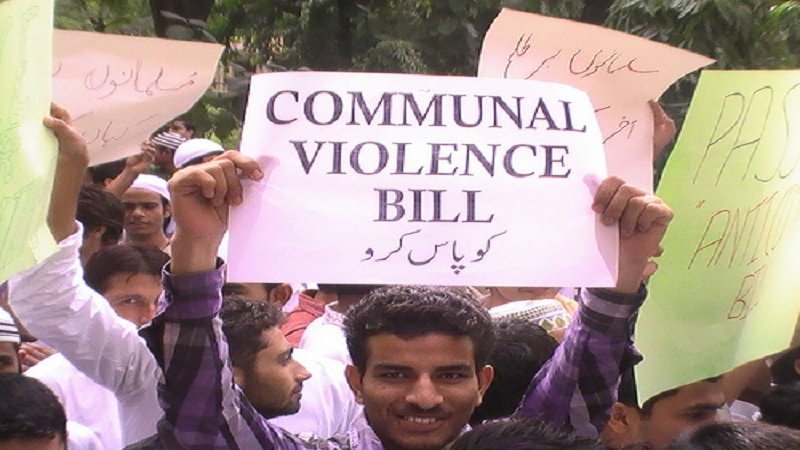Communal Violence bill: UPA-II’s step towards converting the idea of saffron terrorism into a narrative


In February 2014, in the last tenure of UPA-2, a controversial bill named Prevention of Communal and Targeted Violence (Access to Justice and Reparations bill was dropped after a fiery debate by the opposition stating that the bill is itself Communal in nature.
While the Congress and its senior leaders such as Digvijay Singh maintained an idea of saffron terrorism being involved in the 26/11, and 1993 bomb blasts, the Congress party also seemed less interested in punishing the punishable and more in propagating the idea of saffron terrorism.
The bill was drafted by an unelected body such as the National Advisory Council on the recommendations of a bunch of Congress-leaning activists.
The bill is communal in nature as the definition of the term ‘group’ mentioned as ‘group’ is a religious or linguistic minority, which may include Scheduled Castes and Scheduled Tribes in a certain State. “Group” implies a religious or linguistic minority in any state in the Union of India, or Scheduled Castes and Scheduled Tribes (SC/ST)…”, according to a major definition of the individuals who are likely the targets of targeted violence. So, if you ignore the fact that religious minorities and SC/STs together make up over 40% of the population, the Bill cleverly assumes that the remaining 60% (which might include upper caste Hindus, other backward castes, and other assorted groups) as the potential miscreants.
The NAC draught is clearly influenced by only one instance of communal violence: Gujarat in 2002. Any law enacted as a result of a single outlier incidence is likely to be punitive and ineffective. When the goal should be to prevent communal violence of any kind, instead the bill is targeting the majority leading to ineffectiveness.
The bill aimed at establishing a National Authority of Communal Harmony, Justice, and Reparation (NachJar), which had to be governed by a seven-member body that will be effectively unaccountable to anyone. It was meant to be chosen by a panel consisting of the Prime Minister, the Home Minister, the Leader of the Opposition in the Lok Sabha, and nominees from all seven national political parties (Congress, BJP, CPI, CPM, BSP, RJD, and NCP, to name a few). Since they already have ex-officio seats as Prime Minister, Home Minister, and Leader of the Opposition in the Lok Sabha. While it was unclear that any member of the opposition will have an additional representation.
Since the majority vote will determine NachJar’s appointment, all Congress needs is an agreement with three other members to fill the Authority with its own choice.
However, once in office, it will be nearly impossible to remove any member because they can only be dismissed by presidential order, only on the basis of demonstrated misbehavior or functional incapacity, and after a serious investigation. For prejudice or incompetency to perform their duties, no member can be dismissed. Four of the seven members of NachJar must had to be women and one must be a member of the SC/ST.
DISCLAIMER: The author is solely responsible for the views expressed in this article. The author carries the responsibility for citing and/or licensing of images utilized within the text.
